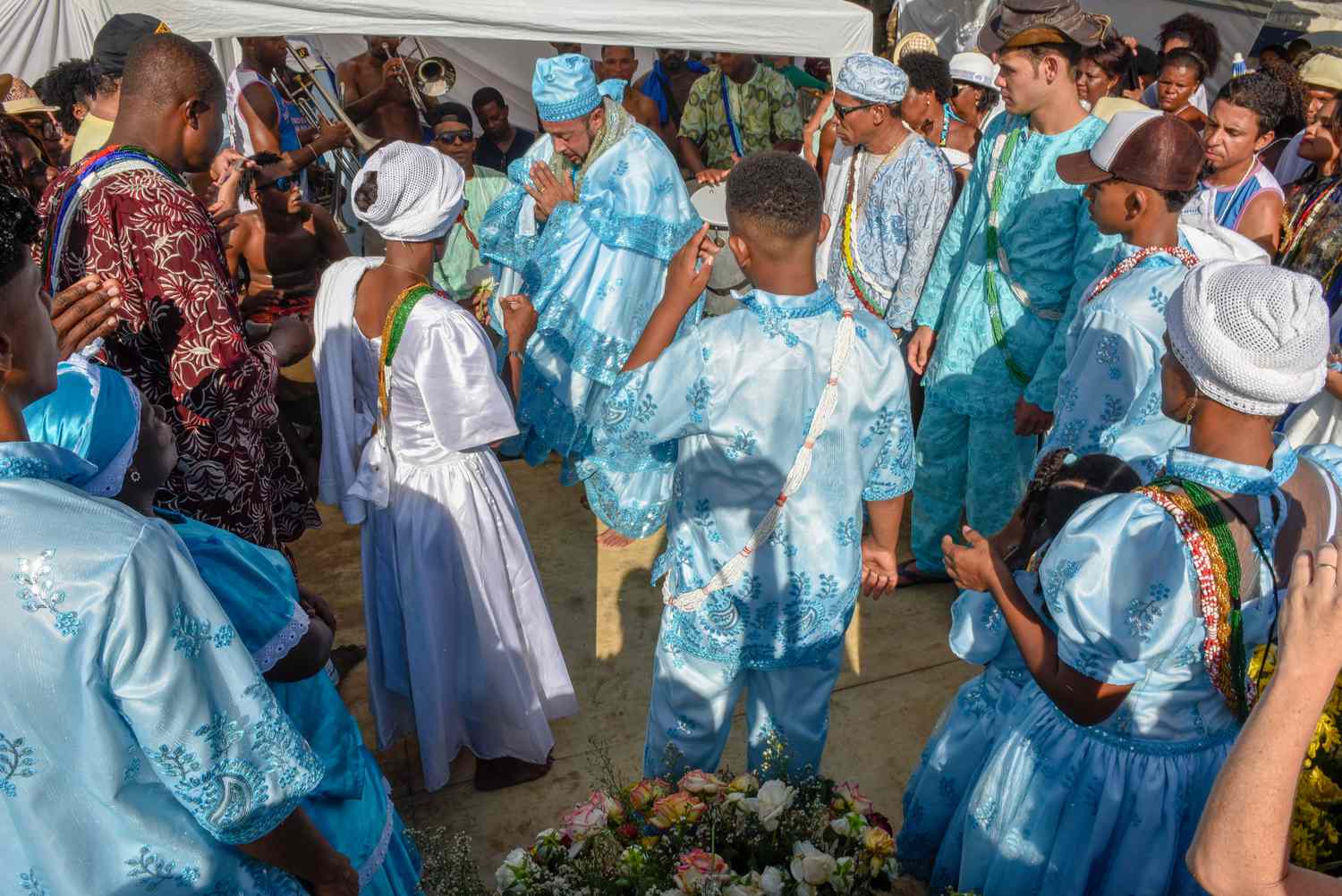
Candomblé is a rich and vibrant Afro-Brazilian religion that blends African traditions with elements of Catholicism. Originating in Brazil during the 19th century, it has deep roots in the cultures of enslaved Africans brought to South America. Candomblé worships a pantheon of deities known as Orishas, each associated with natural elements and human endeavors. Rituals often involve music, dance, and offerings to honor these deities. Unlike many Western religions, Candomblé does not have a central holy text but relies on oral traditions and the guidance of priests and priestesses. This religion emphasizes community, respect for nature, and the interconnectedness of all life. Whether you're curious about its history, practices, or cultural impact, these 25 facts will give you a deeper understanding of Candomblé.
What is Candomblé?
Candomblé is a rich and vibrant Afro-Brazilian religion that blends African traditions with elements of Catholicism and indigenous beliefs. It has a deep cultural and spiritual significance in Brazil.
- Candomblé originated in Brazil during the 19th century, primarily among African slaves.
- The religion is a syncretic blend of Yoruba, Fon, and Bantu beliefs.
- Practitioners worship deities known as Orishas, who represent natural forces and ancestors.
- Each Orisha has specific attributes, colors, and symbols associated with them.
- Candomblé ceremonies often involve drumming, dancing, and singing to honor the Orishas.
The Role of Orishas
Orishas play a central role in Candomblé, acting as intermediaries between humans and the supreme creator.
- There are over 400 Orishas, but only about 16 are commonly worshipped in Candomblé.
- Each person is believed to have a patron Orisha who guides and protects them.
- Orishas are associated with specific elements like water, wind, and fire.
- Offerings such as food, flowers, and candles are made to please the Orishas.
- Orishas communicate with followers through divination practices like Ifá.
Rituals and Ceremonies
Rituals and ceremonies are vital aspects of Candomblé, providing a way for practitioners to connect with the divine.
- Initiation ceremonies, known as Bori, are essential for new members.
- During rituals, participants often enter a trance state to become possessed by an Orisha.
- Sacred drumming, called Atabaque, is used to invoke the Orishas.
- Ceremonies are usually held in Terreiros, which are sacred spaces or temples.
- Rituals often include animal sacrifices, which are seen as offerings to the Orishas.
Cultural Significance
Candomblé has a profound impact on Brazilian culture, influencing music, dance, and art.
- The religion has contributed to the development of Brazilian music genres like Samba and Axé.
- Candomblé festivals, such as Festa de Iemanjá, attract thousands of participants and tourists.
- The religion promotes values of community, respect, and harmony with nature.
- Candomblé has faced persecution and discrimination but continues to thrive.
- Many Brazilians, regardless of their religious beliefs, participate in Candomblé rituals and celebrations.
Modern-Day Candomblé
Candomblé continues to evolve, adapting to contemporary society while preserving its traditional roots.
- The religion has spread beyond Brazil, with communities in countries like the United States and Portugal.
- Candomblé practitioners often incorporate modern elements into their rituals.
- The religion has gained recognition and respect as an important part of Brazil's cultural heritage.
- Candomblé leaders, known as Babalorixás and Iyalorixás, play a crucial role in preserving and teaching the traditions.
- Efforts are being made to document and study Candomblé practices to ensure their preservation for future generations.
Final Thoughts on Candomblé
Candomblé, a vibrant Afro-Brazilian religion, offers a rich tapestry of traditions and beliefs. Its roots in African spirituality, combined with elements of Catholicism and indigenous practices, create a unique cultural blend. The Orixás, or deities, play a central role, each associated with natural elements and human characteristics. Rituals, music, and dance are integral, fostering a deep sense of community and connection to the divine.
Understanding Candomblé's history and practices sheds light on its resilience and adaptability. Despite facing persecution, it has thrived, preserving African heritage and influencing Brazilian culture. Whether you're drawn to its spiritual aspects or cultural significance, Candomblé offers a fascinating glimpse into a world where the sacred and the everyday intertwine. Embracing this knowledge enriches our appreciation of the diverse ways people seek meaning and connection in their lives.
Was this page helpful?
Our commitment to delivering trustworthy and engaging content is at the heart of what we do. Each fact on our site is contributed by real users like you, bringing a wealth of diverse insights and information. To ensure the highest standards of accuracy and reliability, our dedicated editors meticulously review each submission. This process guarantees that the facts we share are not only fascinating but also credible. Trust in our commitment to quality and authenticity as you explore and learn with us.


